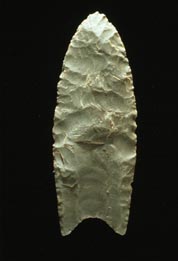"Workout" redirects here. For other uses, see Workout (disambiguation).
"Exercise" redirects here. For other uses, see Exercise (disambiguation).
Physical exercise is any bodily activity that enhances or maintains physical fitness and overall health and wellness. It is performed for various reasons including strengthening muscles and the cardiovascular system, honing athletic skills, weight loss or maintenance, as well as for the purpose of enjoyment. Frequent and regular physical exercise boosts the immune system, and helps prevent the "diseases of affluence" such as heart disease, cardiovascular disease, Type 2 diabetes and obesity.[1][2] It also improves mental health, helps prevent depression, helps to promote or maintain positive self-esteem, and can even augment an individual's sex appeal or body image, which is also found to be linked with higher levels of self-esteem.[3] Childhood obesity is a growing global concern[4] and physical exercise may help decrease some of the effects of childhood and adult obesity. Health care providers often call exercise the "miracle" or "wonder" drug—alluding to the wide variety of proven benefits that it provides.[5][6]
Contents[hide] |
Classification
Types of exercise
Physical exercises are generally grouped into three types,[7] depending on the overall effect they have on the human body:
- Flexibility exercises, such as stretching, improve the range of motion of muscles and joints.[8]
- Aerobic exercises, such as cycling, swimming, walking, skipping rope, rowing, running, hiking or playing tennis, focus on increasing cardiovascular endurance.[9]
- Anaerobic exercises, such as weight training, functional training, eccentric training or sprinting and high-intensity interval training, increase short-term muscle strength.[10]
Categories of physical exercise
- Strength training
- Agility training
- Eccentric training
- Resistance training
- Interval training
- Continuous training
Sometimes the terms 'dynamic' and 'static' are used. 'Dynamic' exercises such as steady running, tend to produce a lowering of the diastolic blood pressure during exercise, due to the improved blood flow. Conversely, static exercise (such as weight-lifting) can cause the systolic pressure to rise significantly (during the exercise).
Categories
Physical exercise is used to improve physical skills. Physical skills fall into the following general categories: Cardiovascular/respiratory endurance, Stamina, Strength, Flexibility, Power, Speed,Coordination, Agility, Balance, and Accuracy.[11]
Metabolic equivalent of task
The Compendium of Physical Activities was developed for use in epidemiologic studies to standardize the assignment of metabolic equivalent of task (MET) intensities in physical activity questionnaires. The Compendium is list of physical activities and the associated energy cost of each activity. The original Compendium was published in 1993, the first update in 2000, and the most recent update in 2011.[12]
MET (Metabolic Equivalent): The ratio of the work metabolic rate to the resting metabolic rate. One MET is defined as 1 kcal/kg/hour and is roughly equivalent to the energy cost of sitting quietly. A MET also is defined as oxygen uptake in ml/kg/min with one MET equal to the oxygen cost of sitting quietly, equivalent to 3.5 ml/kg/min.
Health effects
Physical exercise is important for maintaining physical fitness and can contribute positively to maintaining a healthy weight, building and maintaining healthy bone density, muscle strength, and joint mobility, promoting physiological well-being, reducing surgical risks, and strengthening the immune system.
Exercise reduces levels of cortisol,[13] which causes many health problems, both physical and mental.[14]
Frequent and regular aerobic exercise has been shown to help prevent or treat serious and life-threatening chronic conditions such as high blood pressure,obesity, heart disease, Type 2 diabetes, insomnia, and depression.[15][dead link] Endurance exercise before meals lowers blood glucose more than the same exercise after meals.[16] According to the World Health Organization, lack of physical activity contributes to approximately 17% of heart disease and diabetes, 12% of falls in the elderly, and 10% of breast cancer and colon cancer.[17]
There is evidence that vigorous exercise (90–95% of VO2 Max) induces a greater degree of physiological cardiac hypertrophy than moderate exercise (40 to 70% of VO2 Max), but it is unknown whether this has any effects on overall morbidity and/or mortality.[18]
Some studies have shown that vigorous exercise executed by healthy individuals can increase opioid peptides (a.k.a. endorphins, naturally occurringopioids that in conjunction with other neurotransmitters are responsible for exercise-induced euphoria and have been shown to be addictive), increase testosterone and growth hormone,[19] effects that are not as fully realized with moderate exercise. More recent research[20][21] indicates that anandamidemay play a greater role than endorphins in "runner's high". However, training at this[which?] intensity for long periods of time, or without proper warmup beforehand and cooldown afterwards, can lead to an increased risk of injury and overtraining.[citation needed]
Both aerobic and anaerobic exercise work to increase the mechanical efficiency of the heart by increasing cardiac volume (aerobic exercise), or myocardial thickness (strength training). Such changes are generally beneficial and healthy if they occur in response to exercise.
Not everyone benefits equally from exercise. There is tremendous variation in individual response to training; where most people will see a moderate increase in endurance from aerobic exercise, some individuals will as much as double their oxygen uptake, while others can never augment endurance.[22][23] However, muscle hypertrophy from resistance training is primarily determined by diet and testosterone.[24] This genetic variation in improvement from training is one of the key physiological differences between elite athletes and the larger population.[25][26] Studies have shown that exercising in middle age leads to better physical ability later in life.[27]
Cardiovascular system
The beneficial effect of exercise on the cardiovascular system is well documented. There is a direct relation between physical inactivity and cardiovascular mortality, and physical inactivity is an independent risk factor for the development of coronary artery disease. There is a dose-response relation between the amount of exercise performed from approximately 700 to 2000 kcal of energy expenditure per week and all-cause mortality and cardiovascular disease mortality in middle-aged and elderly populations. The greatest potential for reduced mortality is in the sedentary who become moderately active. Most beneficial effects of physical activity on cardiovascular disease mortality can be attained through moderate-intensity activity (40% to 60% of maximal oxygen uptake, depending on age). ... persons who modify their behavior after myocardial infarction to include regular exercise have improved rates of survival. ... Persons who remain sedentary have the highest risk for all-cause and cardiovascular disease mortality.[28]
Immune system
Although there have been hundreds of studies on exercise and the immune system, there is little direct evidence on its connection to illness.Epidemiological evidence suggests that moderate exercise has a beneficial effect on the human immune system; an effect which is modeled in a J curve. Moderate exercise has been associated with a 29% decreased incidence of upper respiratory tract infections (URTI), but studies of marathon runners found that their prolonged high-intensity exercise was associated with an increased risk of infection occurrence. However, another study did not find the effect. Immune cell functions are impaired following acute sessions of prolonged, high-intensity exercise, and some studies have found that athletes are at a higher risk for infections. The immune systems of athletes and nonathletes are generally similar. Athletes may have slightly elevated natural killer cell count and cytolytic action, but these are unlikely to be clinically significant.[29]
Vitamin C supplementation has been associated with lower incidence of URTIs in marathon runners.[29]
Biomarkers of inflammation such as C-reactive protein, which are associated with chronic diseases, are reduced in active individuals relative to sedentary individuals, and the positive effects of exercise may be due to its anti-inflammatory effects. The depression in the immune system following acute bouts of exercise may be one of the mechanisms for this anti-inflammatory effect.[29]










